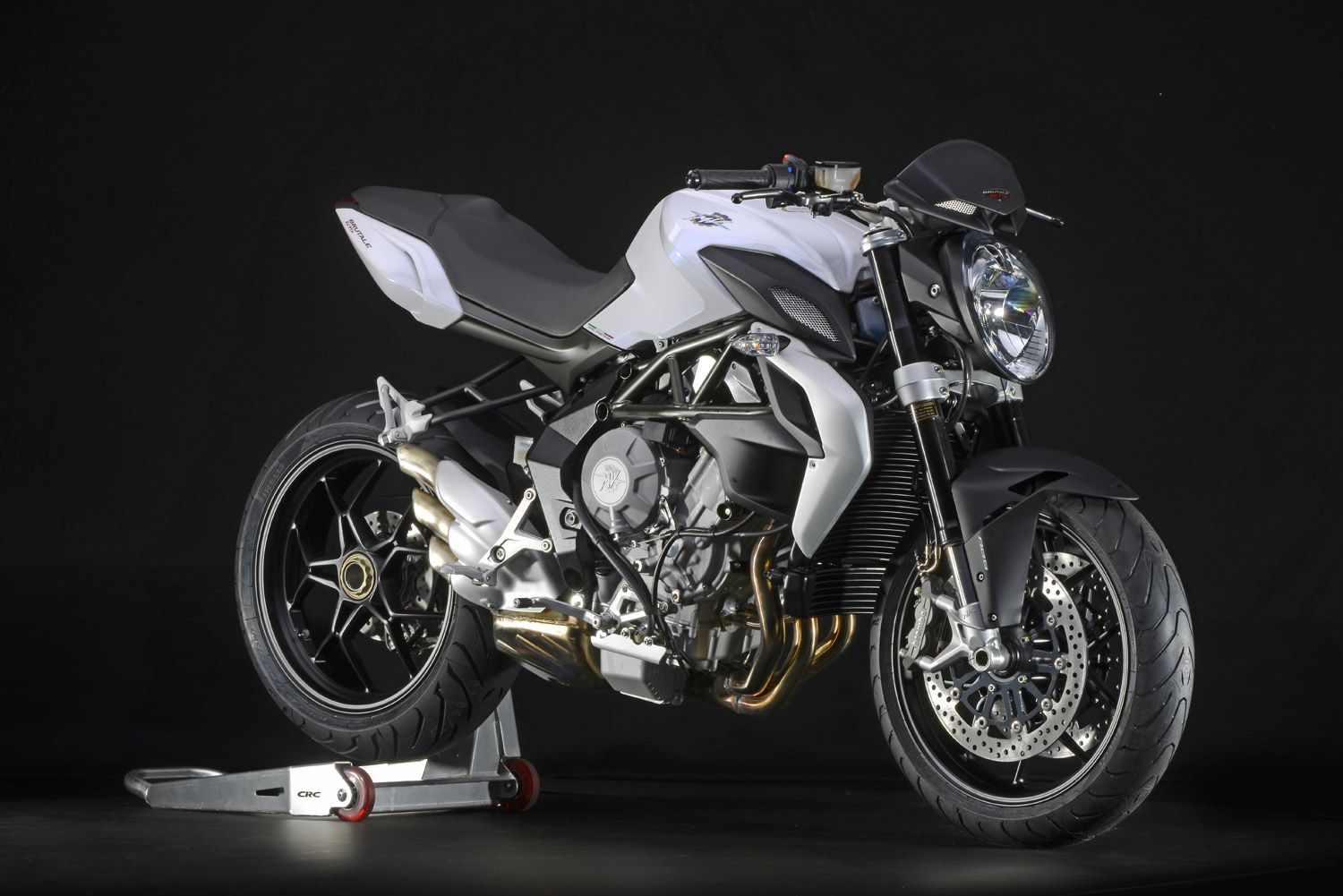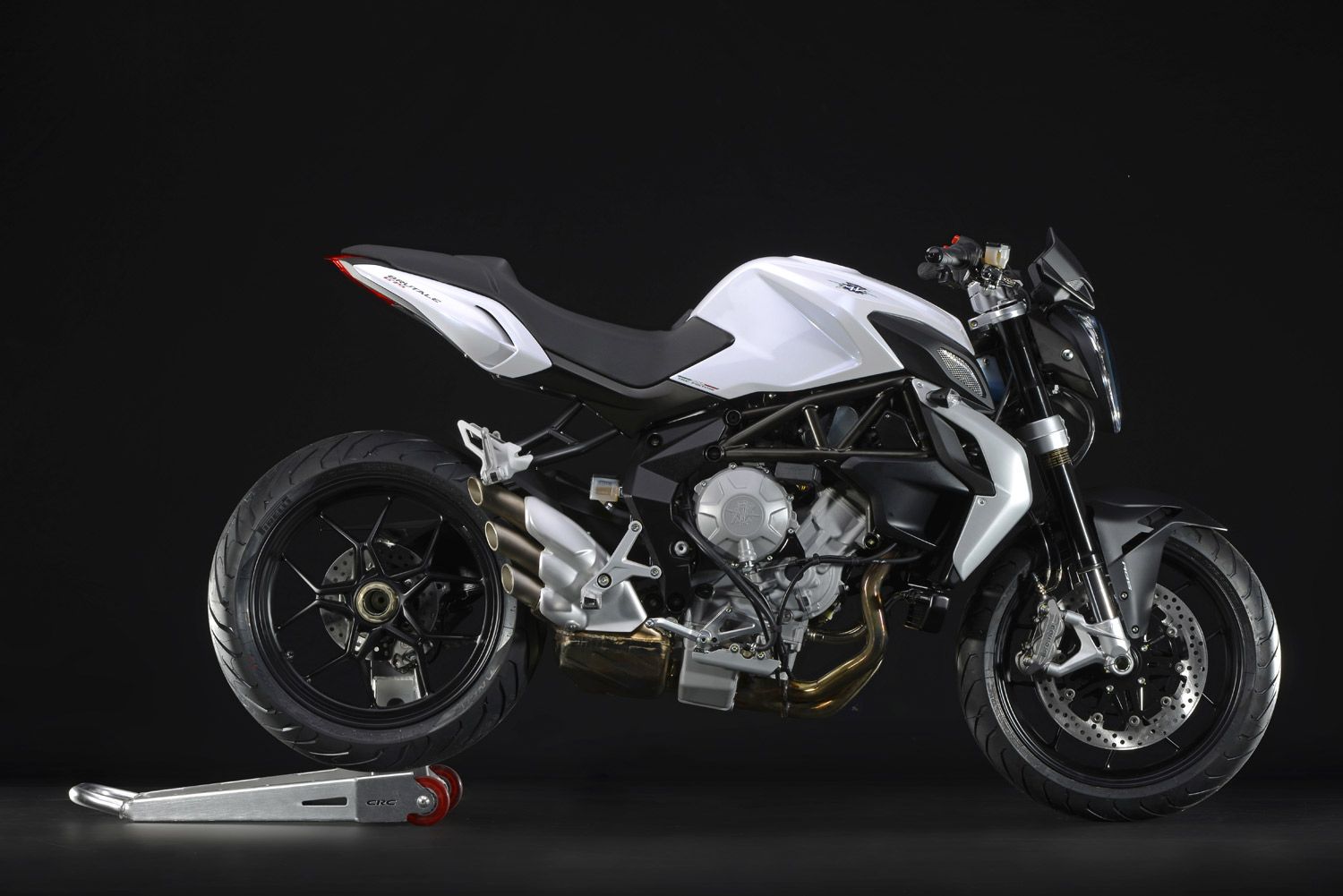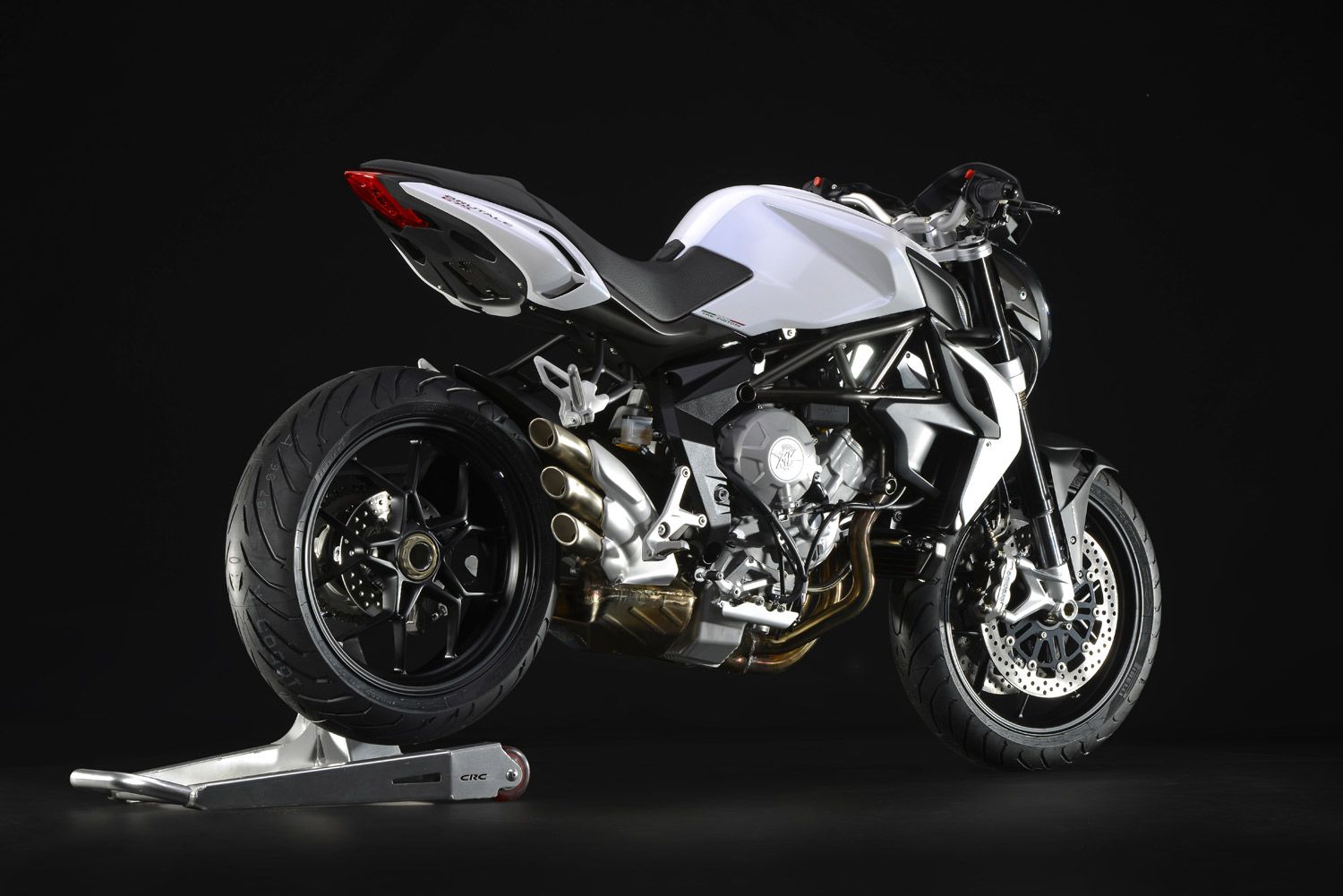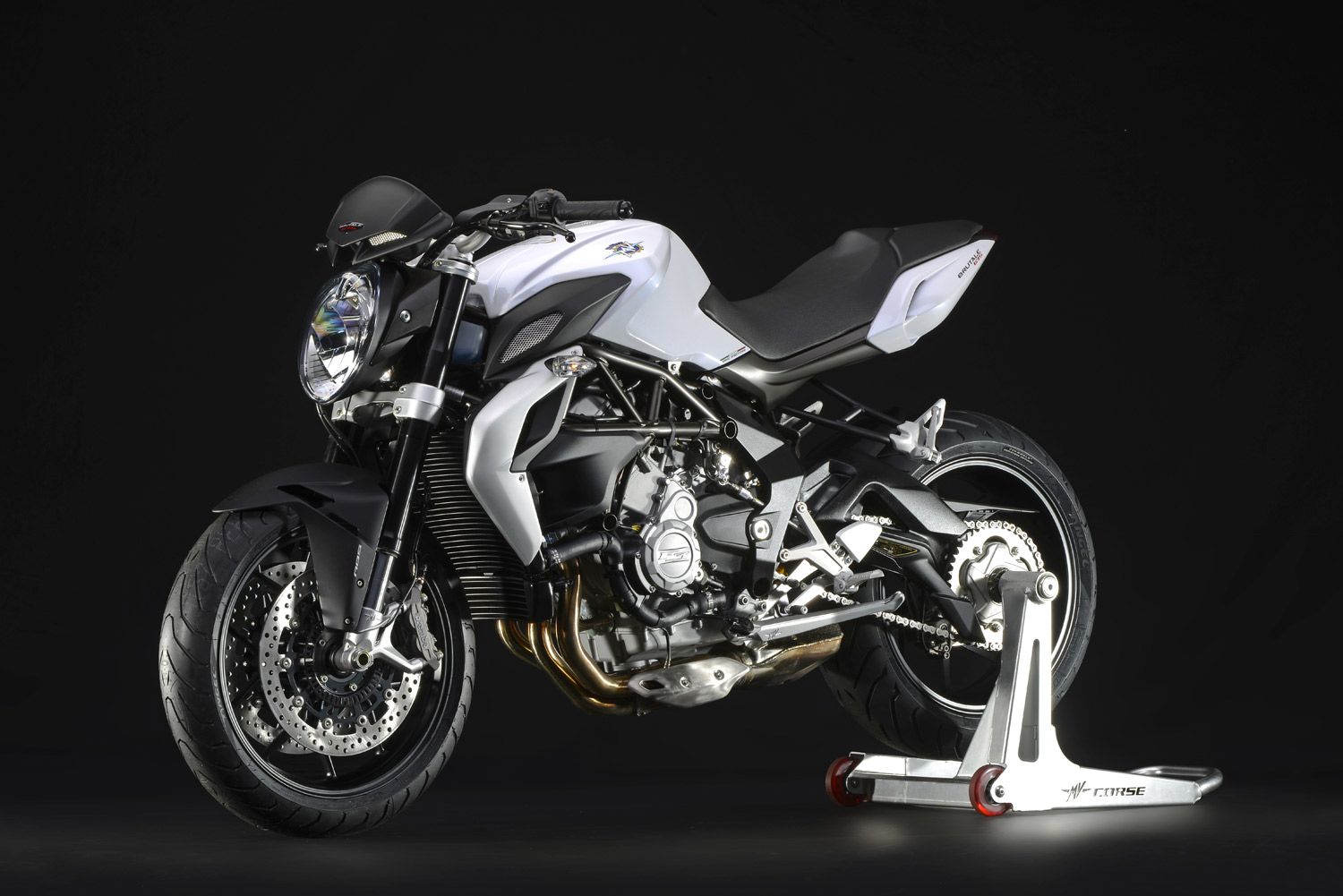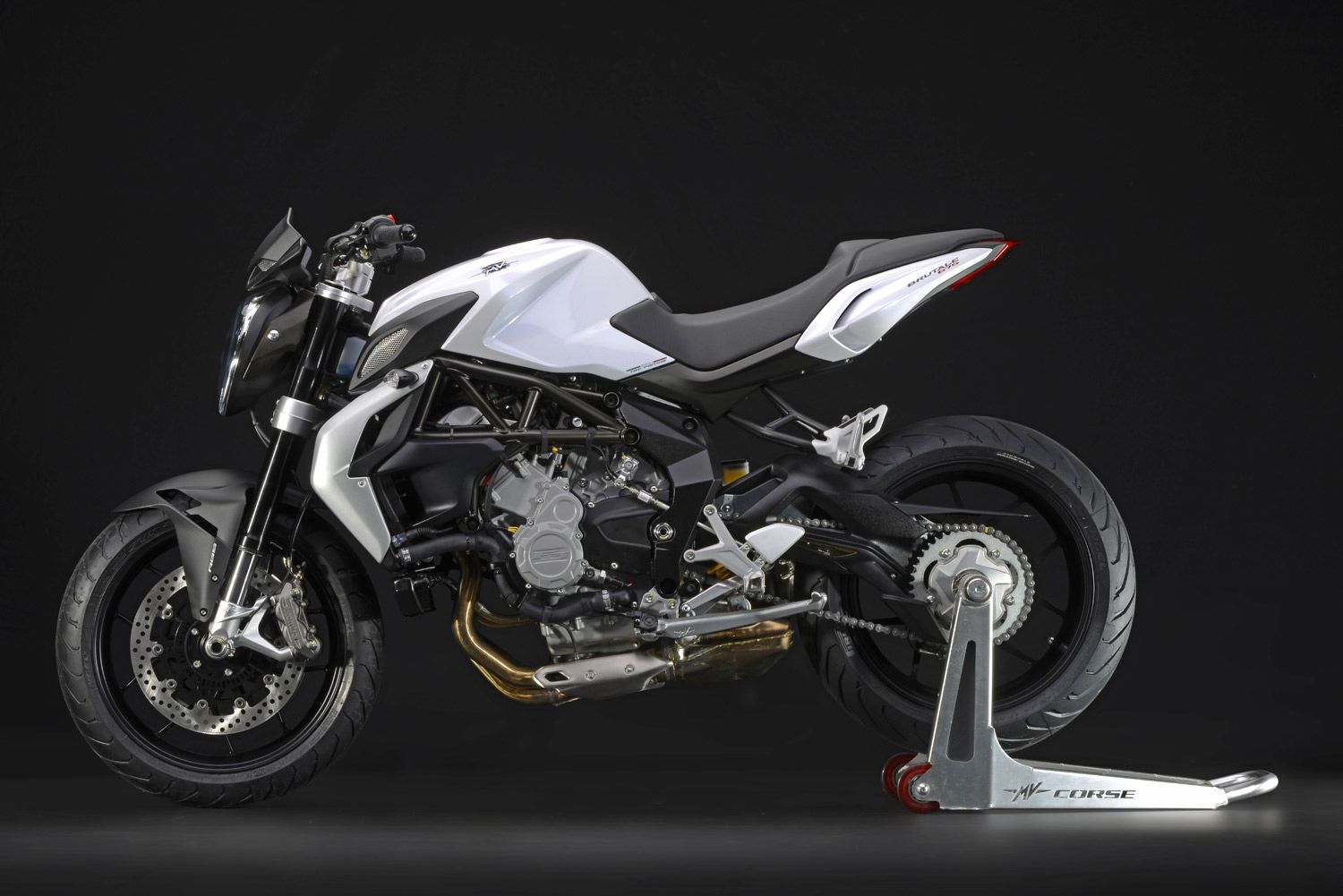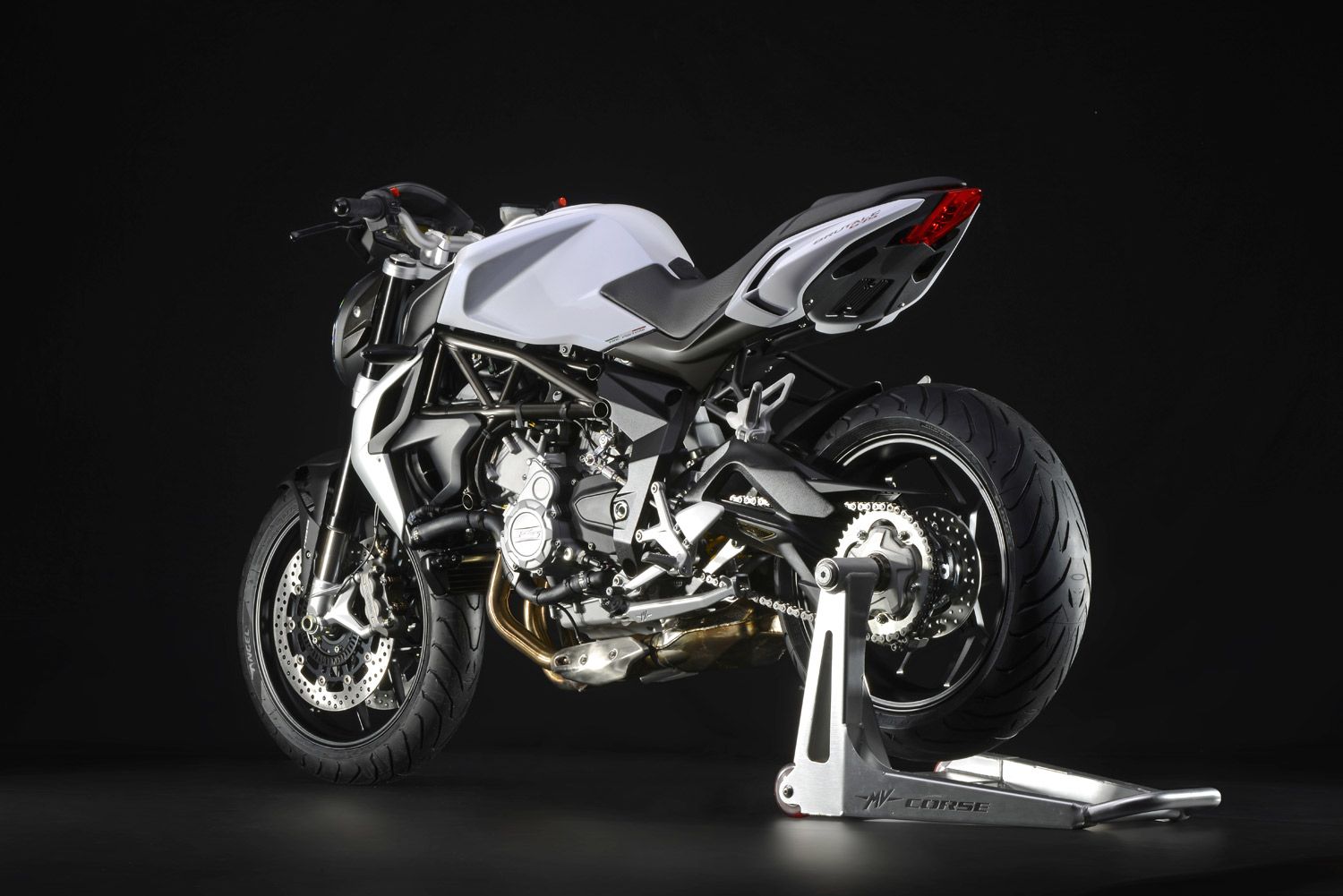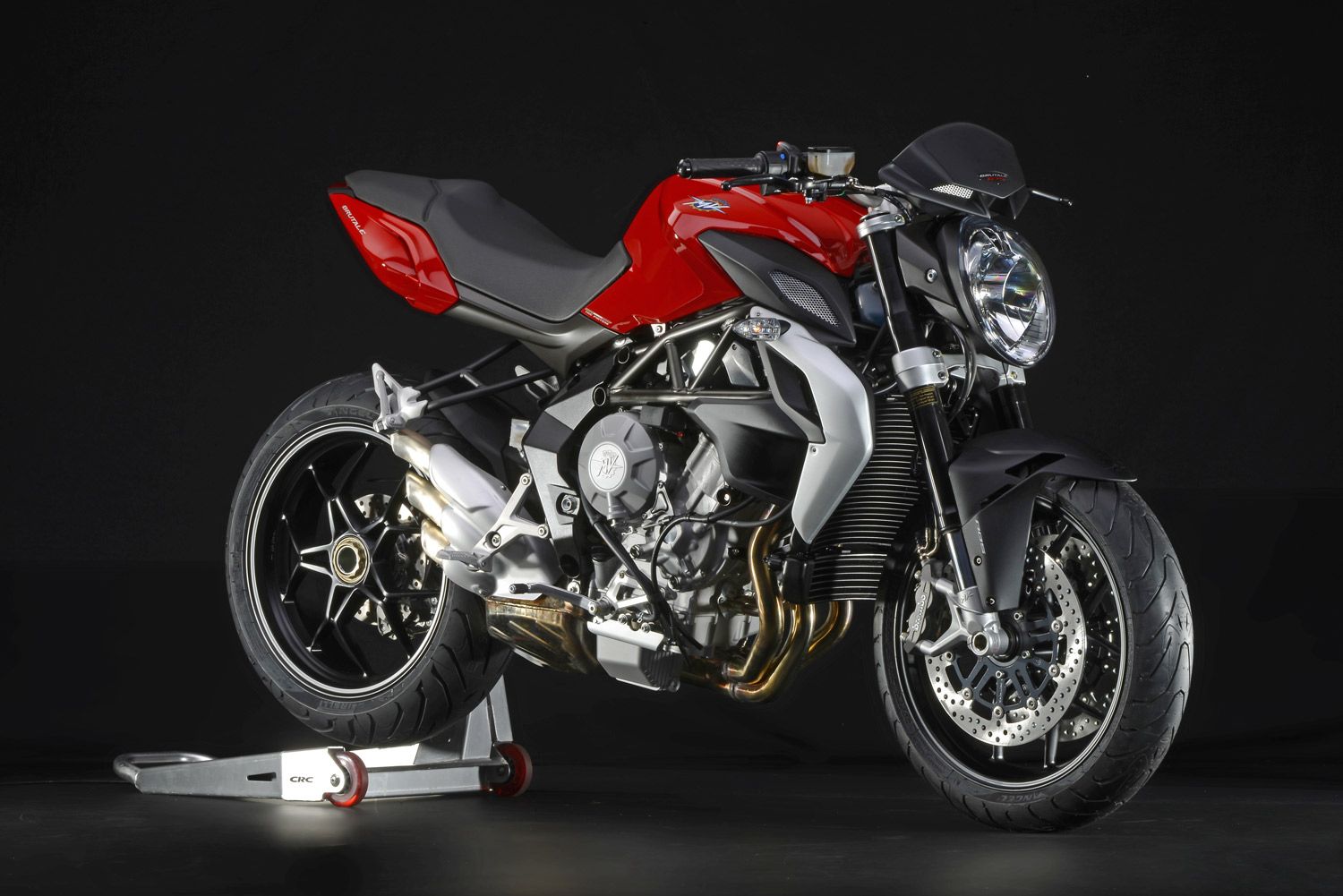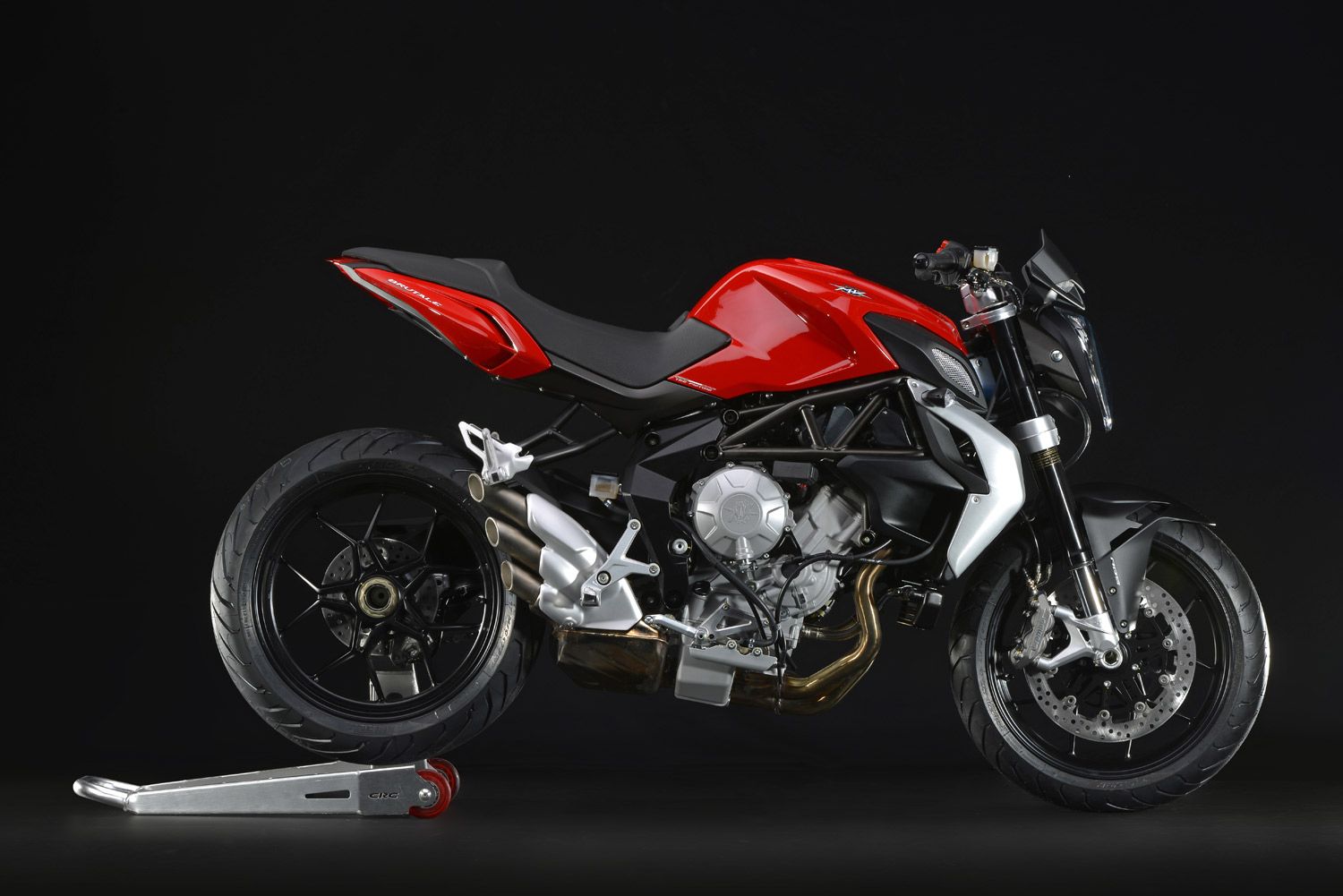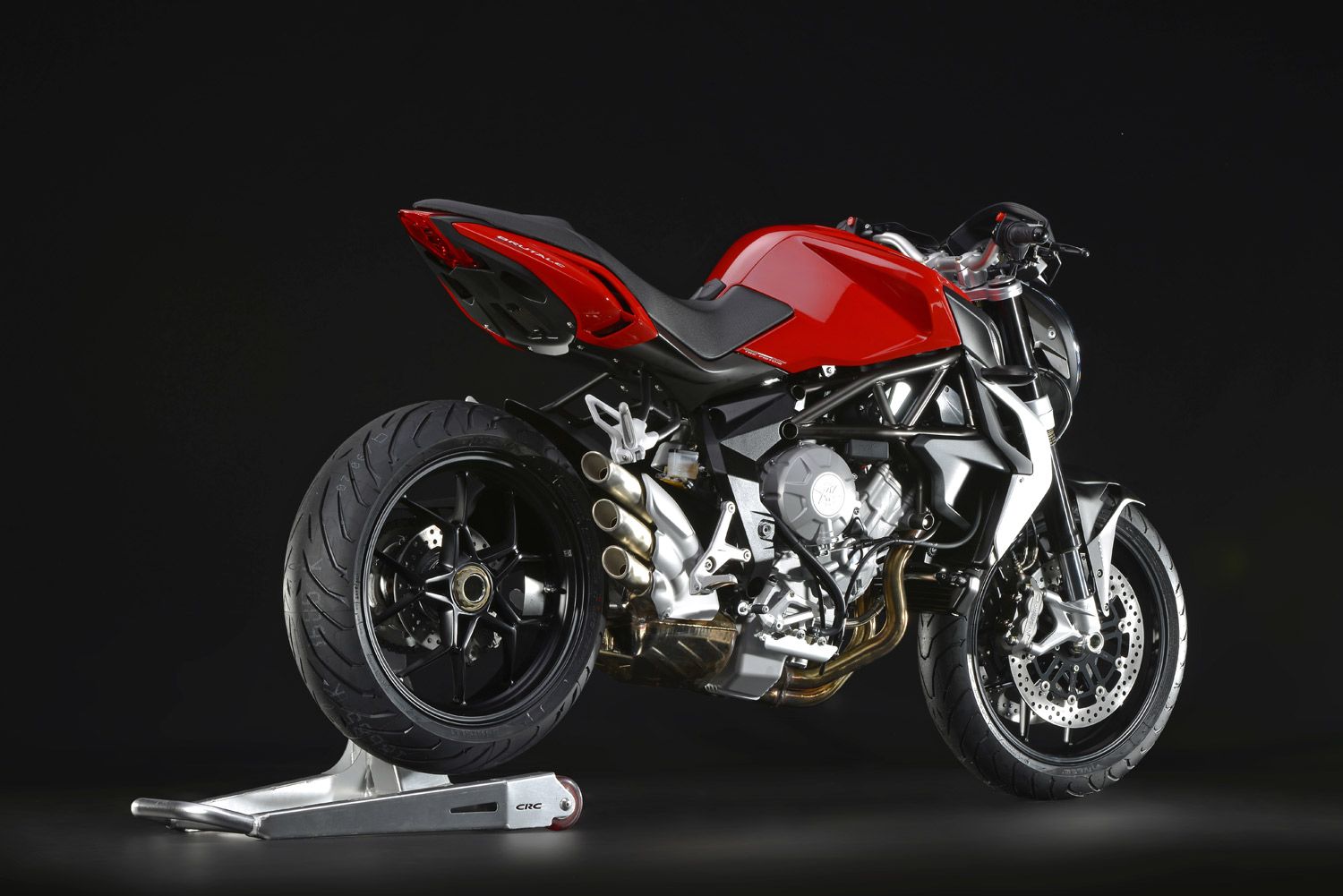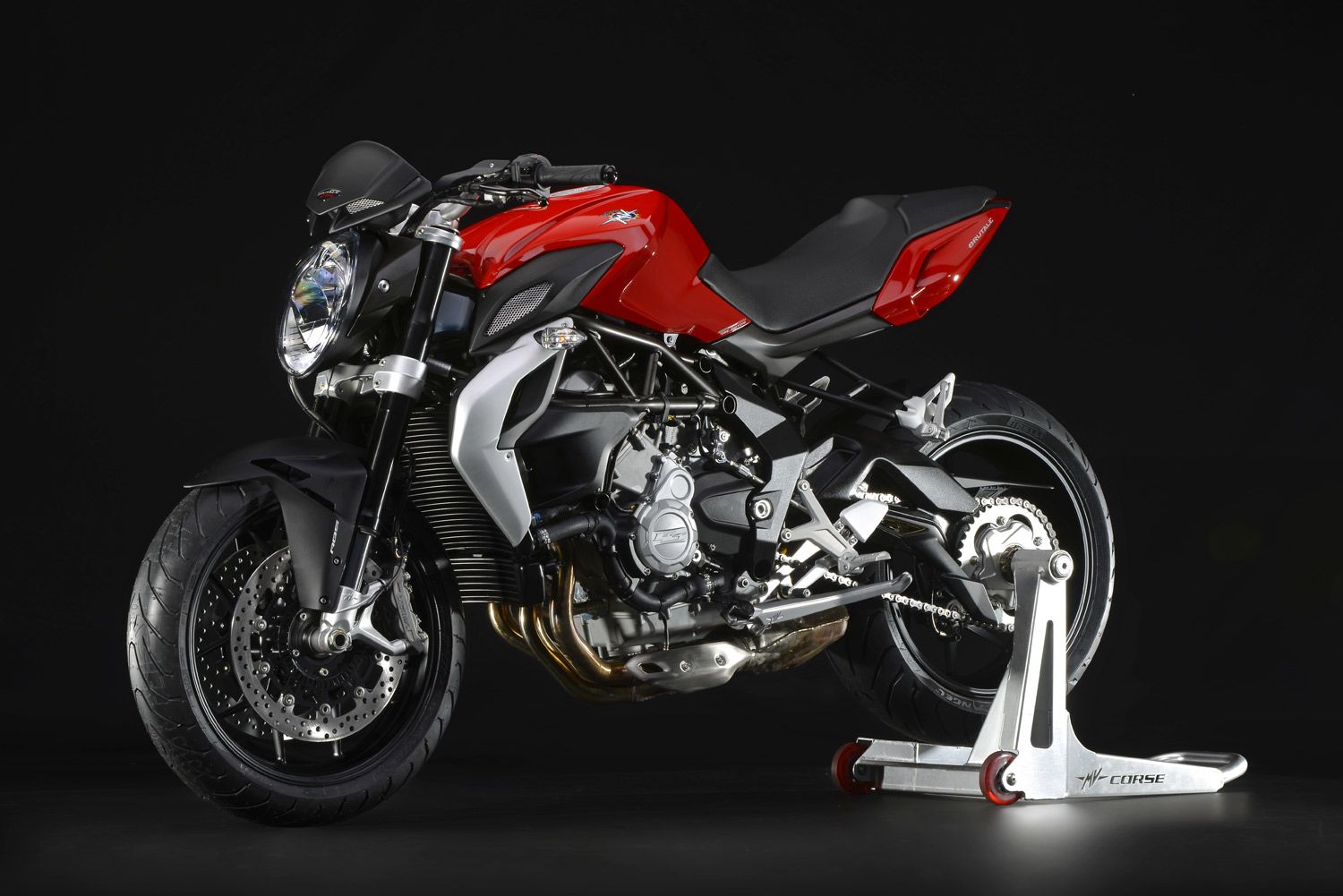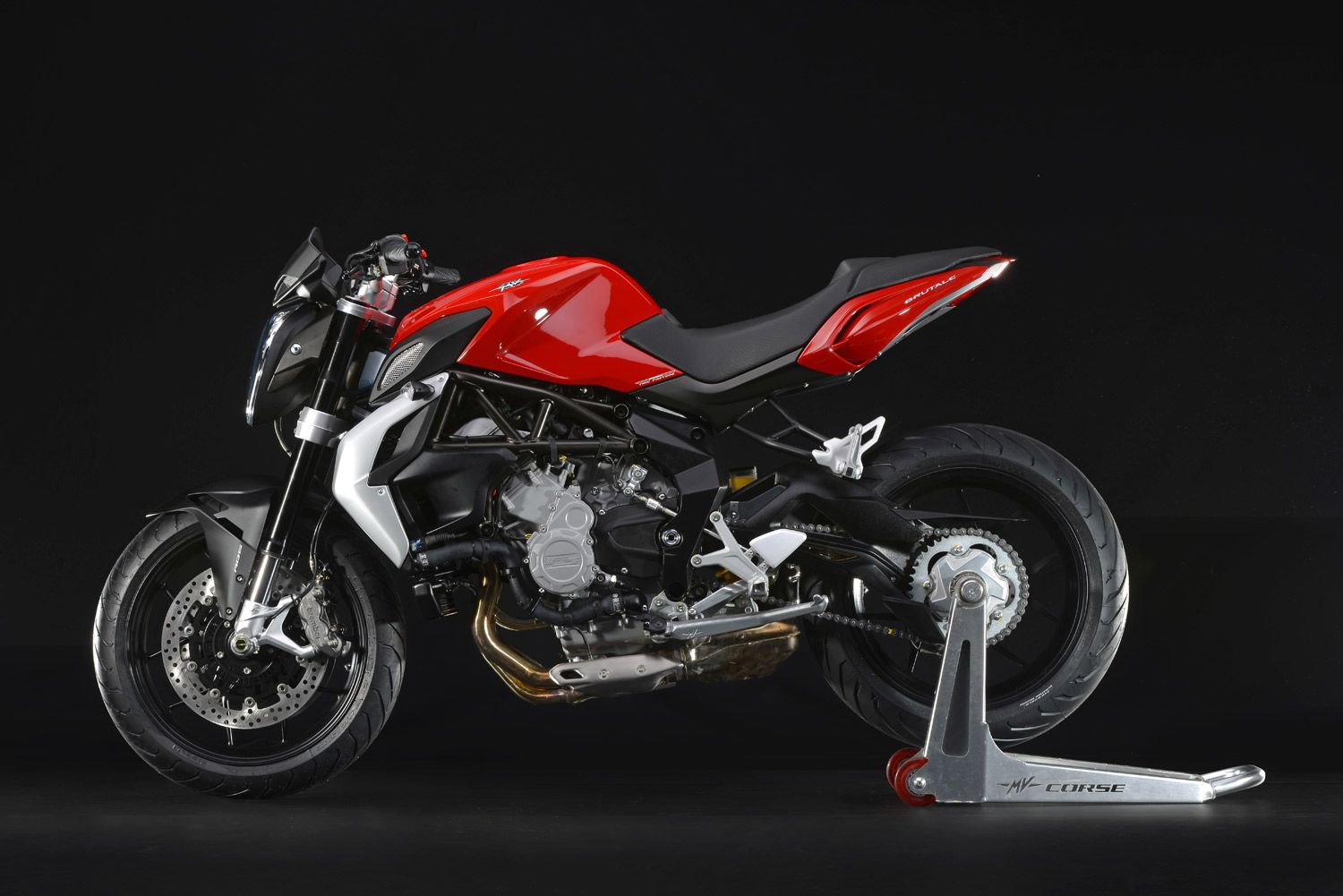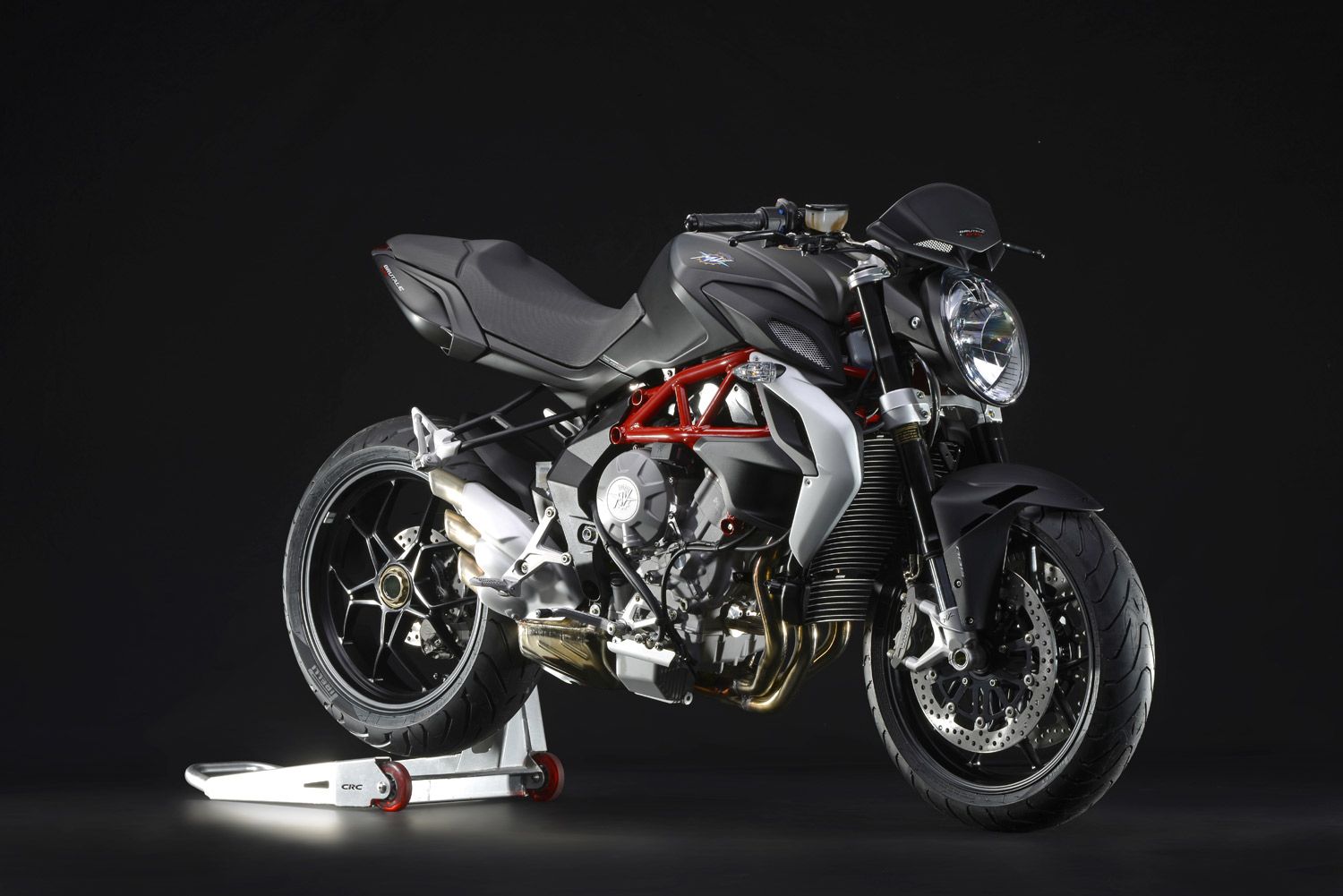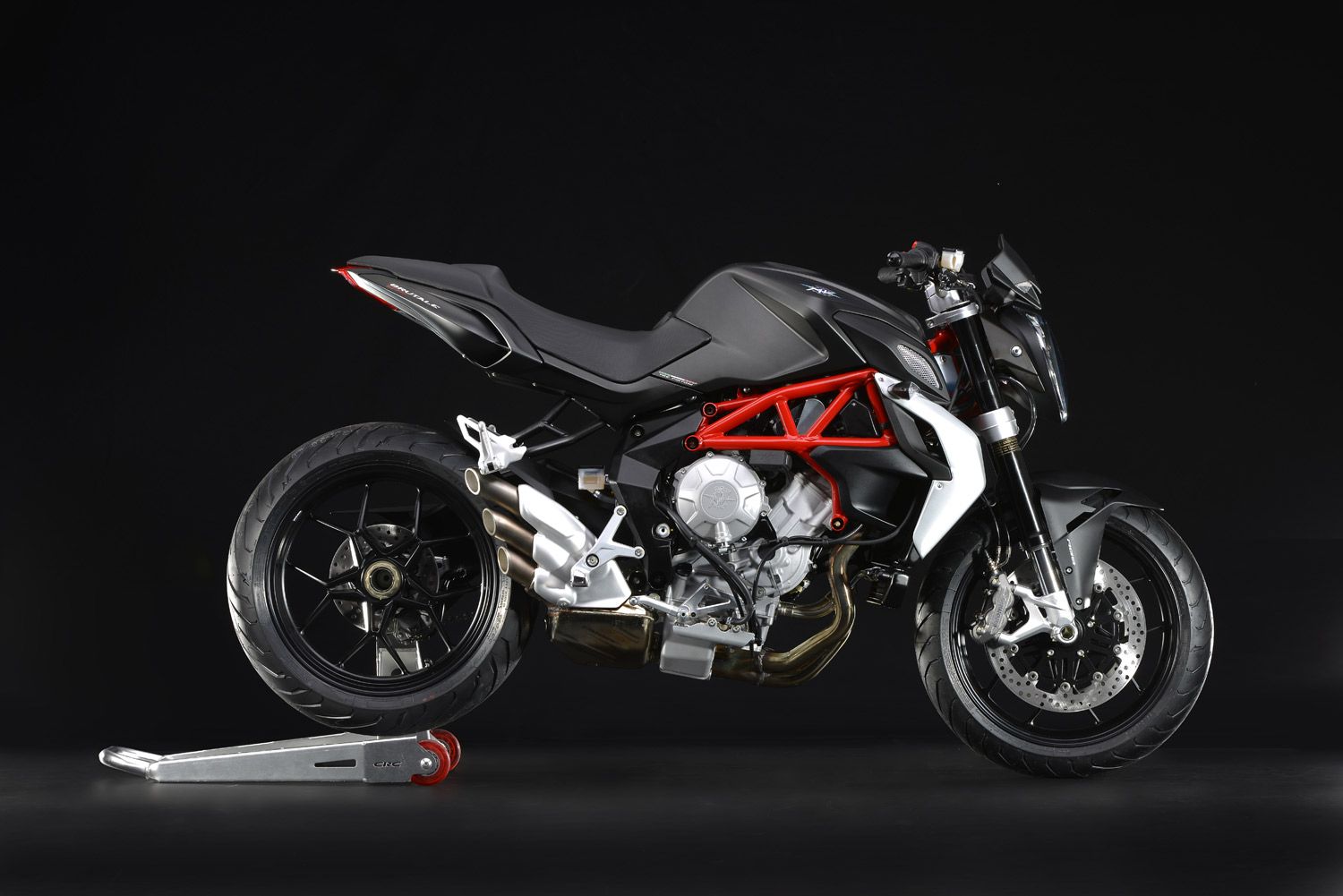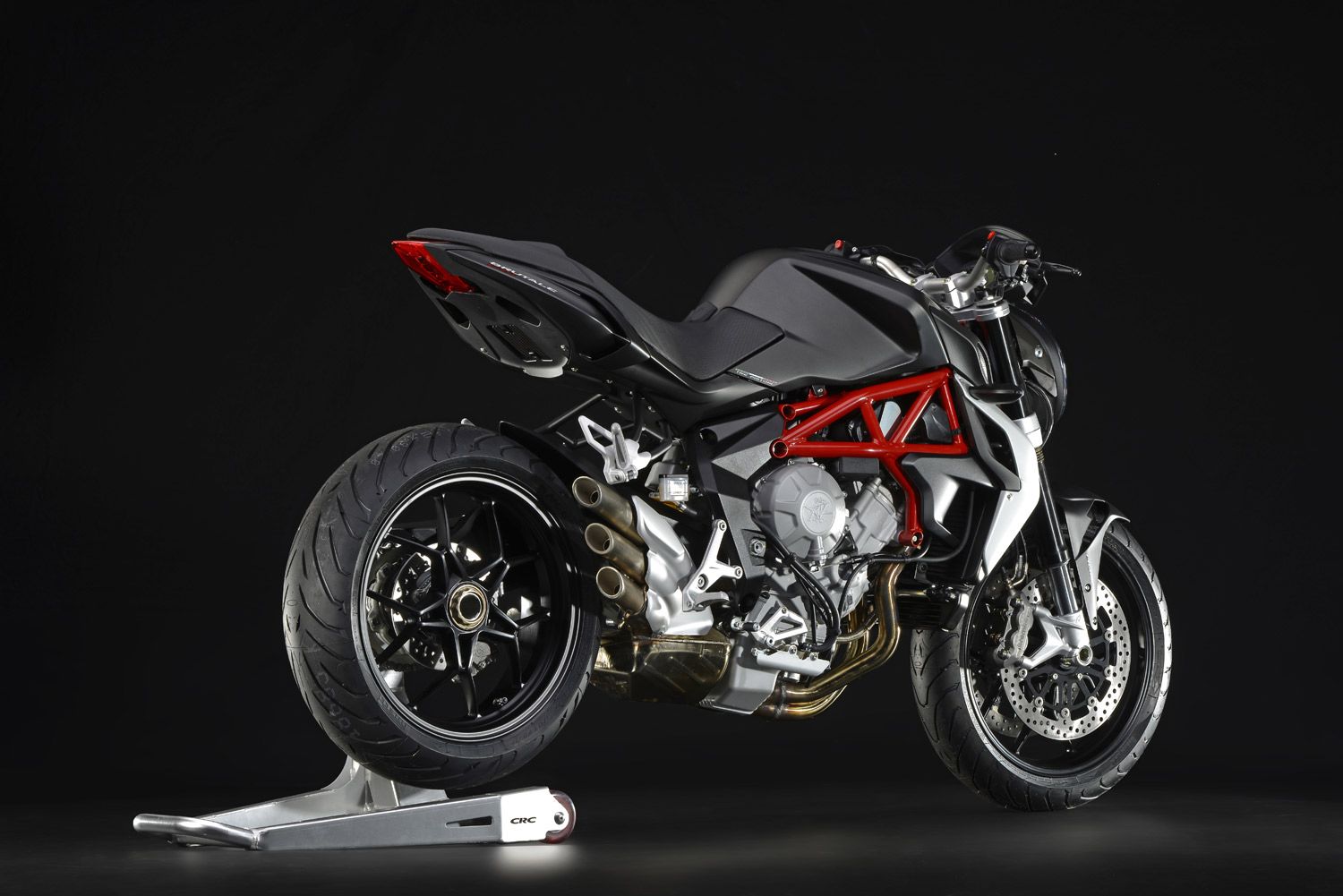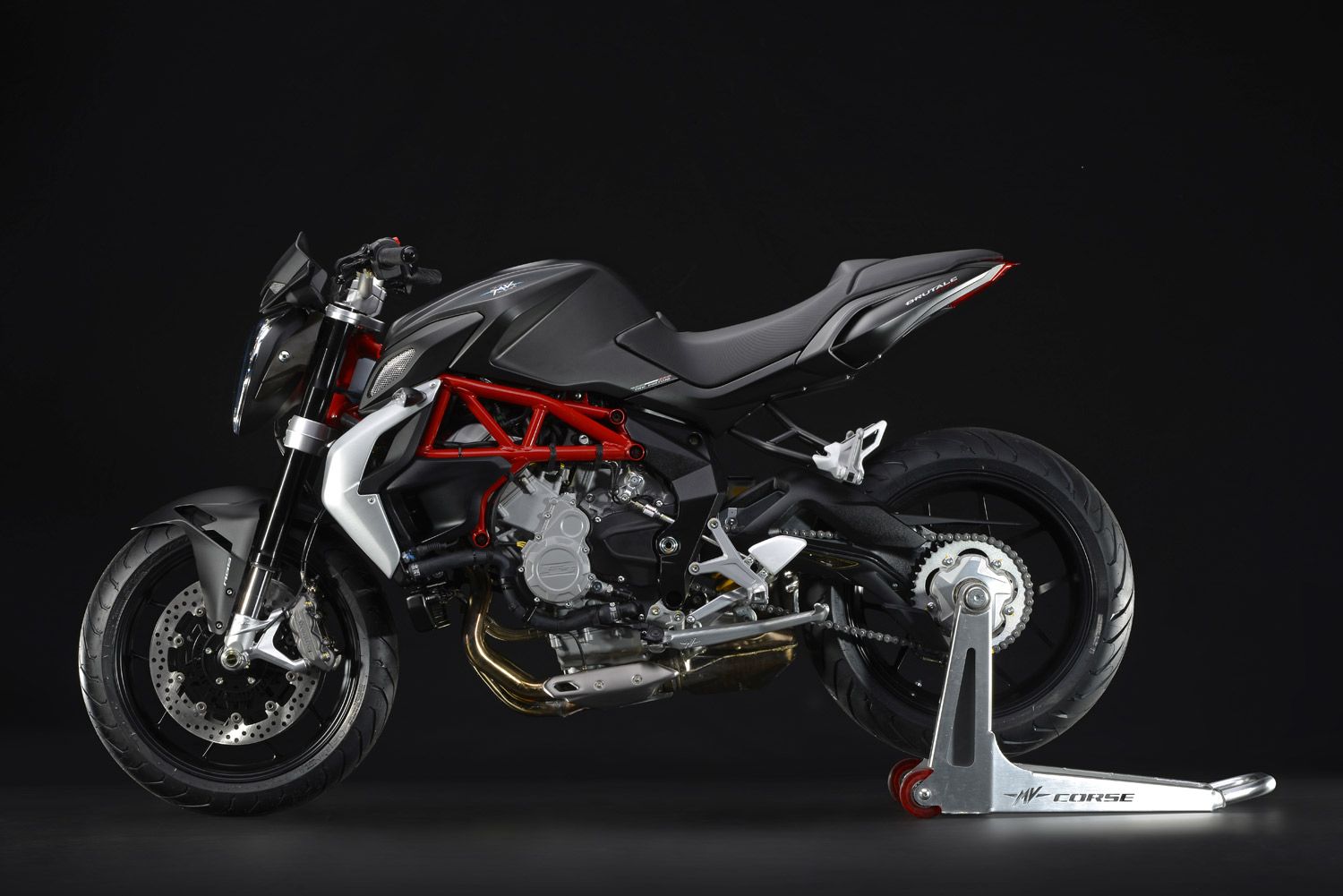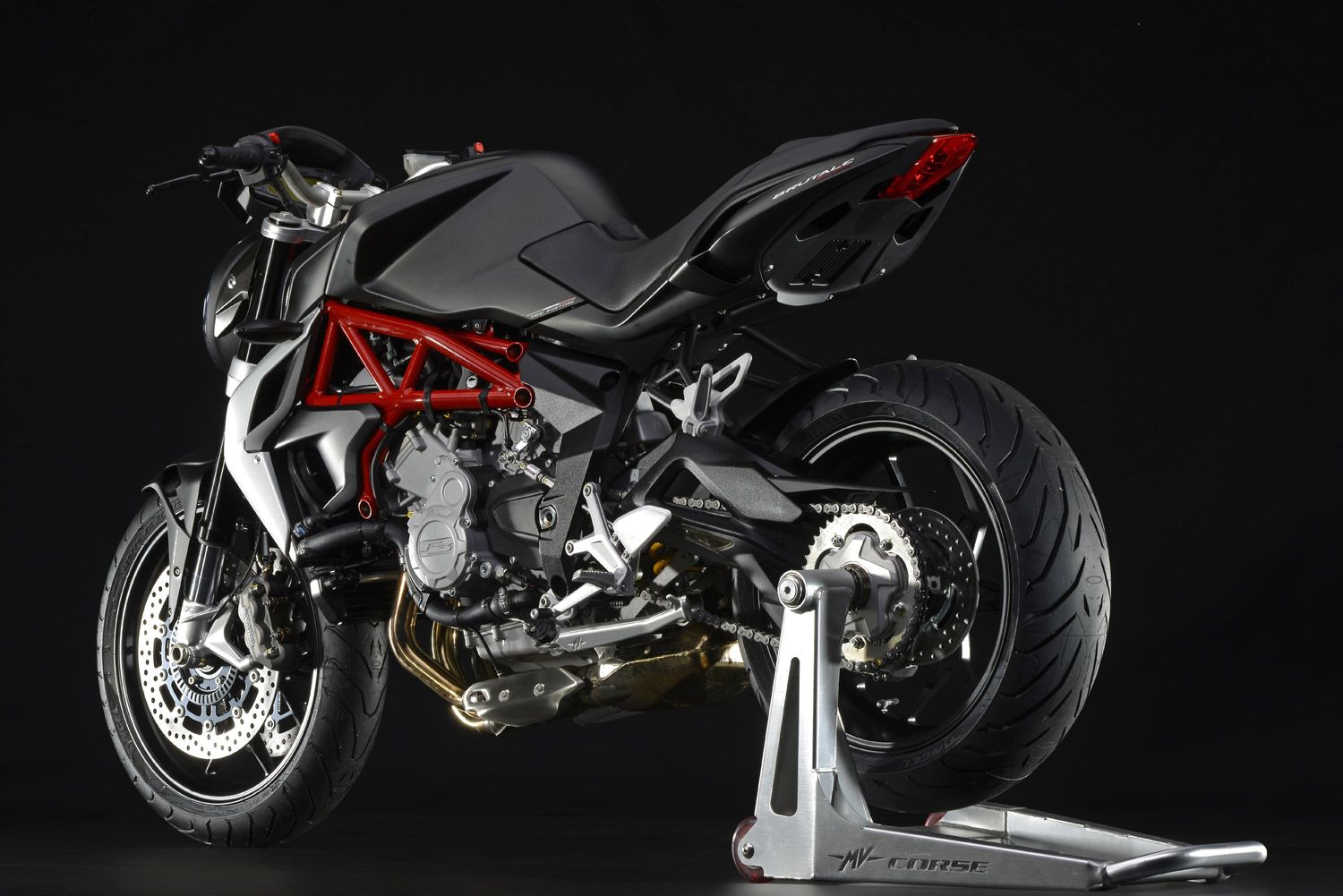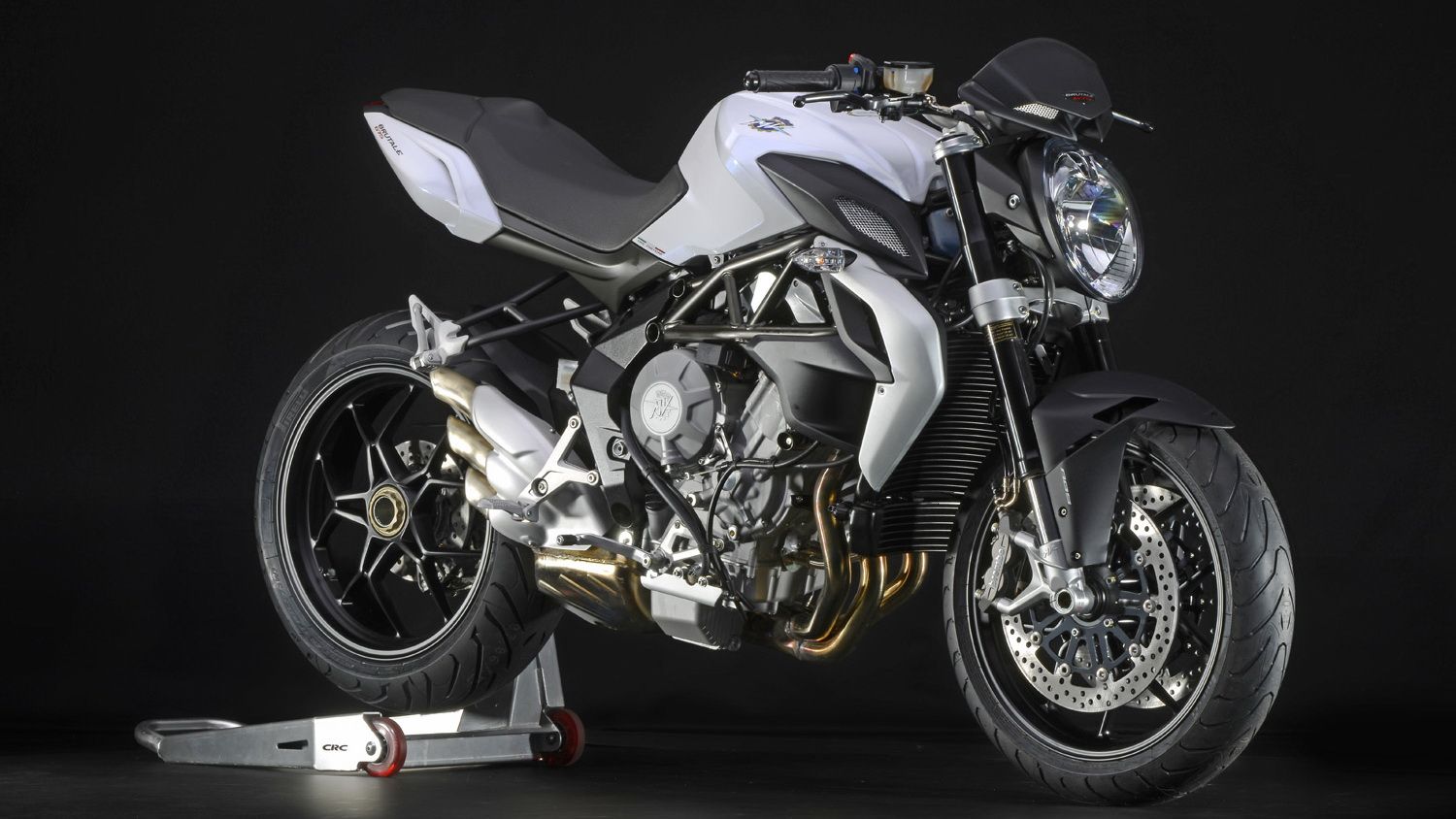The Meccanica Verghera (MV) Continue reading for my review of the Brutale 675->ke947 company continues its push into the bare-bike market with the middleweight, 2015 Brutale 675. Built as a somewhat smaller sibling to the awe-inspiring Brutale 800 RR, it offers the same look and many of the same features as its big brother. Short, light and nimble, with performance that demands respect, this “little” Brutale demonstrates that MV Agusta is relevant, indeed a contender, in the worldwide sportbike->ke631 market.
Continue reading for my review of the Brutale 675
2015 MV Agusta Brutale 675
- Make: Array
- Model: 2015 MV Agusta Brutale 675
- Engine/Motor: Three cylinder, 4 stroke, 12 valve
- Horsepower: 110
- Torque: 48
- Transmission: 6-speed
Design
Brutale models follow the “naked bike” philosophy, and the 675 is no exception. Minimal sheet metal (body panels) and fenders leaves the frame, engine and running gear exposed for all the world to see. Personally, I like this look; the lack of stylized vanity covers drives the imagination and appeals to my inner pragmatist – in fact, one could say this “lack of style” is actually a style all its own.
Even though the “guts” are visible and rather busy looking, the overall look is that of a lean, mean, tire-melting machine with a very clean rear end that tapers down to nothing beneath the pillion pad. Even the taillight assembly looks as though it was wind-tunnel tested, and the waspish waist allows the rider to reach the ground with ease when stopped and still integrate with the bike when underway to make machine and rider as one.
Chassis
Designers built the trellis frame using steel tubing where they had to and aluminum components where they could, for a strong but lightweight assembly that leaves the bike short and agile. A long, single-sided swingarm reduces the unsprung weight at the rear tire, and pushes the wheel away from the central mass of the bike to show off the futuristic-looking, Y-spoke cast rim. A Sachs monoshock with preload adjuster works on a progressive linkage to support the rear end with 4.68 inches of travel, while 43 mm Marzocchi inverted forks support the front with 4.92 inches of travel.
This makes for a stiff bike that resists the great torsional stresses of hard cornering and the tendency to dive during hard braking. Good thing, too, because this ride has brakes to spare. The dual, four-piston Brembo calipers bind the front wheel via 320 mm floating steel brake discs, with a 220 mm disc and dual-piston caliper in back, all under the management of the Bosch “9 Plus” ABS system with RLM (rear-wheel lift-up mitigation). Chassis running gear is rounded out (pun pun) by the 17-inch, cast aluminum, Y-spoke rims and Z-rated tires.
Drivetrain
MV Agusta used a street-modified version of its race-proven, F3->ke3184 engine as the beating heart for this ride – but don't take that to mean that the engine is, by any means, severely nerfed. This little triple displaces a mere 41.2 cubic inches (675 cc, hence the ingeniously clever name), yet manages to crank out an astounding 110 horsepower and 47.9 pound-feet of torque at 12,500 and 12,000 rpm, respectively. Waste heat gets dissipated by separate coolant and oil radiators (and never the twain shall meet) for plenty of safe cooling capacity.
The MVICS (motor and vehicle integrated control system) manages the Mikuni Drive-by-Wire induction system to control misfires and detonation, for smooth transitions and throttle response across the board, and gives the rider four preset engine maps -- plus a fifth slot for a custom map -- to dial in a specific torque curve. As if that wasn't enough, a traction control system monitors wheel slip, and has eight levels of intervention to help you keep this ride on the rails, regardless of skill level and road conditions. As much as I mistrust ride-by-wire, I can definitely make arguments for using it on machines with this much get-up-and-go, and would likely start on the highest (read: newbie) level until I made friends with the bike.
A mechanical primary drive carries power from the engine, through the wet, multi-disc clutch and to the six-speed, cassette-style, constant-mesh transmission. The MV EAS (electronically-assisted shift) allows you to upshift without rolling off the throttle, for the ultimate in aggressive acceleration.
Price
At $11,998, this is a lot of bang for your buck. This price should make the bike accessible to the majority of riders, including the entry-level sector. The bike comes in Pearl White/Matte Metallic Anthracite, Red/Matte Metallic Anthracite or Matte Metallic Black.
He Said
“ MV Agusta really wears its passion on its sleeve with the Brutale line, and the 675 is no exception. It shows the same attention to detail and racing DNA as its big brother, but with slightly less intimidation factor. I've said it before, and I say it again; if I ever decide to stop riding American-made bikes, I am definitely going to look at Italian machines. This ride is a perfect example why.”
She Said
My wife and fellow writer, Allyn Hinton, says "I look at the max horsepower and torque at over 12k rpm. That baby must go screaming down the road. Leave it to the Italians to get that kind of muscle out of a tiny little engine. I don't care for the sound, though. I guess I'm too partial to the sexy V-twin rumble. Three cylinder engines just sound like something is horribly wrong in the engine. One thing I definitely like is the EAS that lets you upshift without letting go of the accelerator. That's sweet."
Specifications
|
Engine Type: |
Three Cylinder, Four Stroke, 12 Valve |
|
Timing System: |
DOHC |
|
Total Displacement: |
41.2 Cubic Inch |
|
Compression Ratio: |
12.3 to 1 |
|
Starting: |
Electric |
|
Bore X Stroke: |
3.1 Inch X 1.8 Inch |
|
Max. Power - R.P.M. (At The Crankshaft): |
110 Horsepower At 12,500 rpm |
|
Max. Torque - R.P.M.: |
47.9 Pound-Feet At 12,000 rpm |
|
Cooling System: |
Cooling With Separated Liquid And Oil Radiators |
|
Engine Management System: |
Integrated Ignition - Injection System MVICS (Motor & Vehicle Integrated Control System) With Three Injectors Engine Control Unit Eldor EM2.0, Throttle Body Full Drive By Wire Mikuni, Pencil-Coil With Ion-Sensing Technology, Control Of Detonation And Misfire Torque Control With Four Maps, Traction Control With Eight Levels Of Intervention |
|
Electronic Quick-Shift: |
MV EAS (Electronically Assisted Shift) |
|
Clutch: |
Wet, Multi-Disc With Mechanical Drive |
|
Transmission: |
Cassette Style; Six Speed, Constant Mesh |
|
Primary Drive: |
19/36 |
|
Gear Ratio: |
First Gear: 13/37, Second Gear: 16/34, Third Gear: 18/32, Fourth Gear: 19/30, Fifth Gear: 21/30. Sixth Gear: 22/29 |
|
Final Drive Ratio: |
16/43 |
|
Voltage: |
12 Volts |
|
Alternator: |
350 Watts At 5,000 rpm |
|
Battery: |
12 Volt - 8.6 Amp Hours |
|
Wheelbase: |
54.33 Inches |
|
Overall Length: |
82.09 Inches |
|
Overall Width: |
28.54 Inches |
|
Saddle Height: |
31.89 Inches |
|
Min. Ground Clearance: |
6.30 Inches |
|
Trail: |
3.74 Inches |
|
Dry Weight: |
368.2 Pounds |
|
Fuel Tank Capacity: |
4.39 U.S. Gallons |
|
Maximum Speed: |
139.8 mph |
|
Frame Type: |
ALS Steel Tubular Trellis |
|
Rear Swing Arm Pivot Plates Material: |
Aluminum Alloy |
|
Front Suspension Type: |
Marzocchi “Upside Down” Telescopic Hydraulic Fork |
|
Fork Dia.: |
43 mm |
|
Fork Travel: |
4.92 Inches |
|
Rear Suspension Type: |
Progressive Sachs, Single Shock Absorber With Spring Preload Adjustment |
|
Single Sided Swing Arm Material: |
Aluminum Alloy |
|
Wheel Travel: |
4.68 Inches |
|
Front Brake: |
Double Floating Disc With 320 mm Steel Braking Disc And Flange |
|
Front Brake Caliper: |
Brembo Radial-Type, With Four 32 mm Pistons |
|
Rear Brake: |
Single 220 mm Steel Disc |
|
Rear Brake Caliper: |
Brembo With Twin 34 mm Pistons |
|
ABS System: |
Bosch 9 Plus with RLM (Rear Wheel Lift-Up Mitigation) |
|
Front Wheel Material/Size: |
Aluminum Alloy 3.50 Inch X 17 Inch |
|
Rear Wheel Material/Size: |
Aluminum Alloy 5.50 Inch X 17 Inch |
|
Front Tire: |
120/70 - ZR 17 M/C (58 W) |
|
Rear Tire: |
180/55 - ZR 17 M/C (73 W) |
|
Fairing Material: |
Thermoplastic |
|
Color Options: |
Pearl White/Matt Metallic Anthracite, Red/Matt Metallic Anthracite, Matt Metallic Black |
|
Price: |
$11.998 |
|


